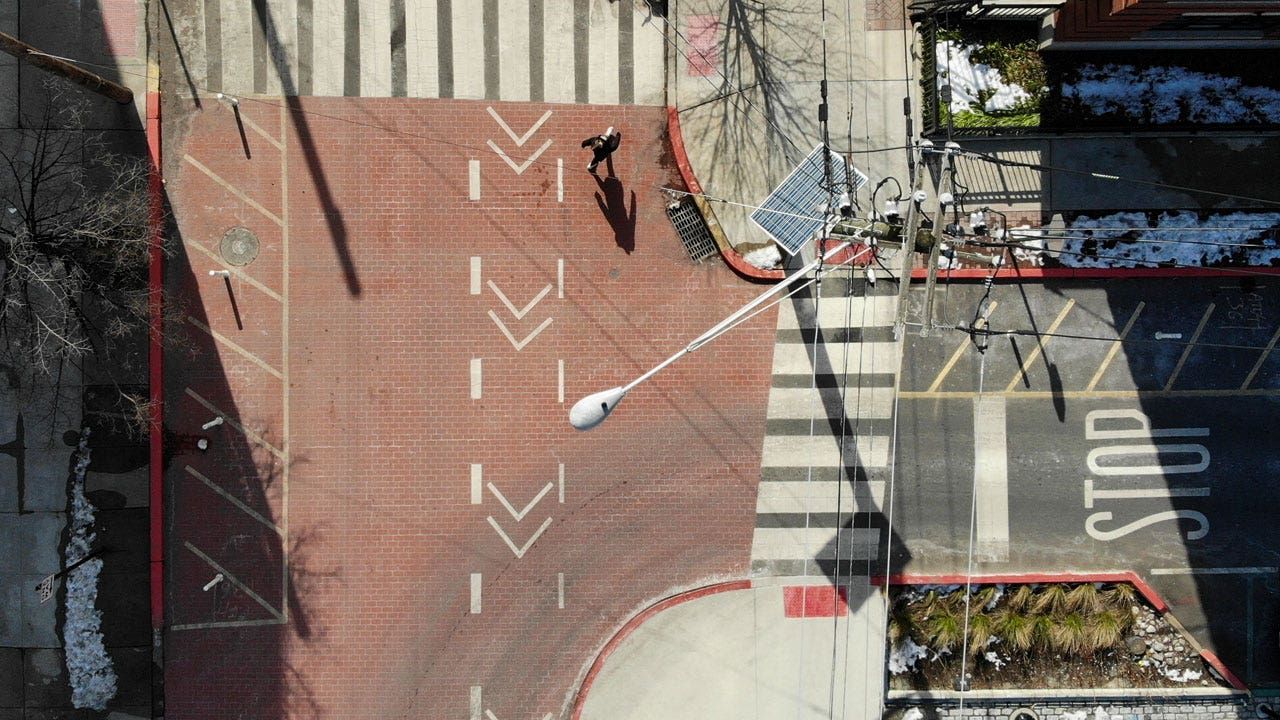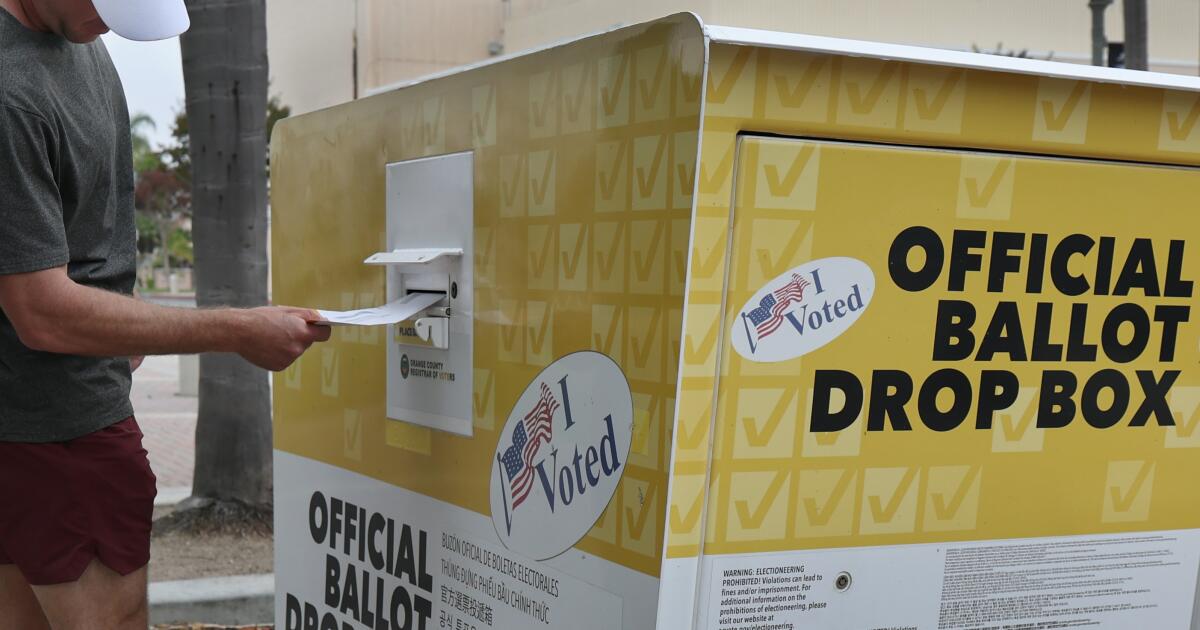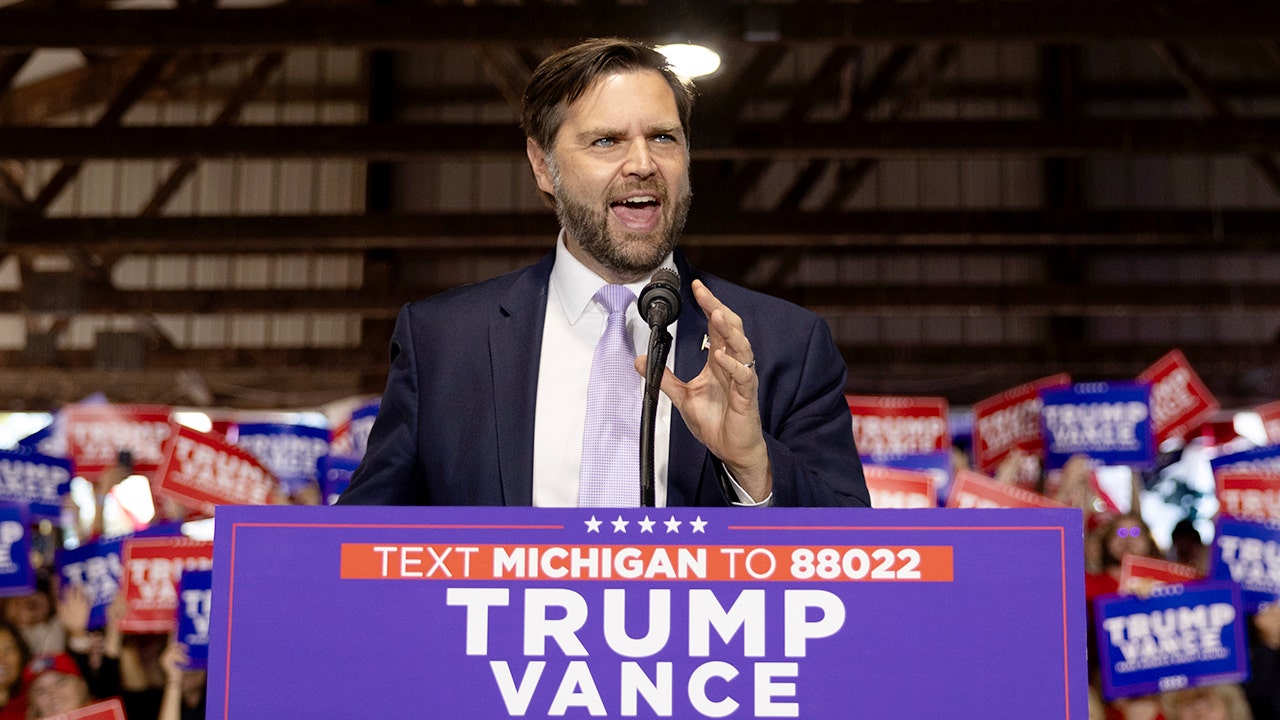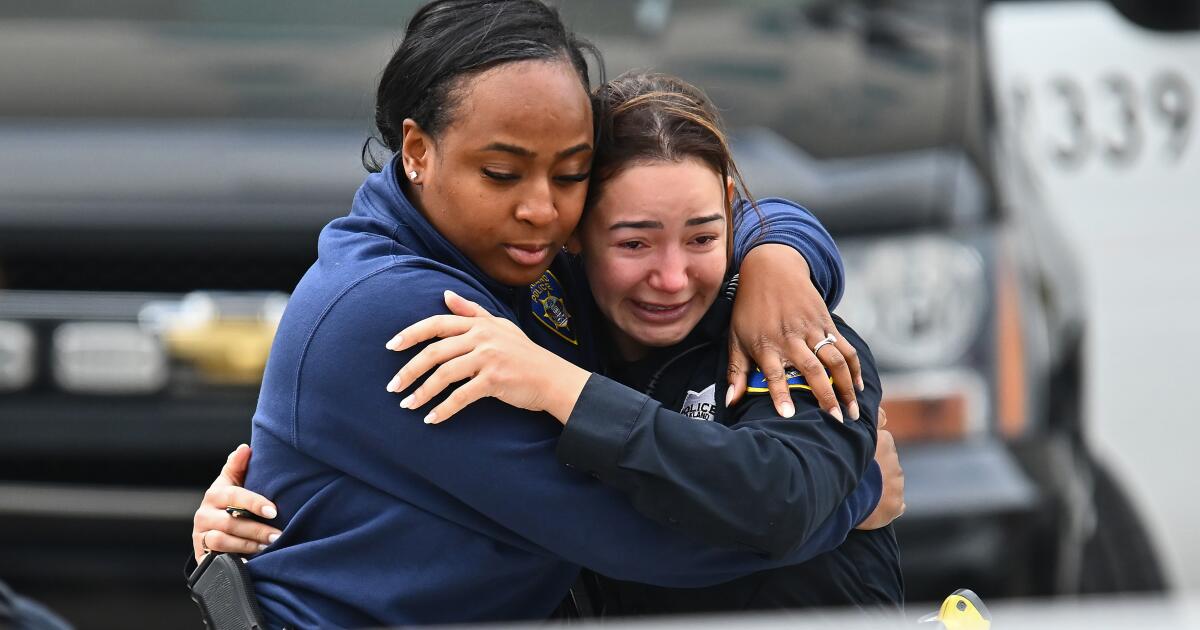Street parking was already scarce in Hoboken, New Jersey, when the death of an elderly pedestrian prompted city leaders to eliminate even more spaces in an attempt to end traffic deaths.
For seven years now, the city of nearly 60,000 residents has reported resounding success: Not a single car occupant, bicyclist or pedestrian has died in a traffic accident since January 2017, elevating Hoboken as a national model for road safety.
Mayor Ravi Bhalla was a member of the City Council in 2015 when a van struck 89-year-old Agnes Accera as she crossed Washington Street in the bustling downtown business district. Bhalla didn't know Accera, but he attended her wake and said her death inspired him to fight for greater safety.
NEW TECHNOLOGY PROMISES TO IMPROVE TRAFFIC FLOW IN BIG CITIES, EXPERTS SAY
“I felt like it wasn't acceptable,” Bhalla said. “Our seniors, to whom we owe the greatest duty of safety, should be able to pass through that street in the safest way possible. That she actually died was a trigger that we needed to take action.”
Bhalla became mayor in 2018 and the city fully committed to Vision Zero: a set of guidelines adopted by numerous cities, states and nations seeking to eliminate traffic deaths. Proponents believe that no accident is truly inevitable and even want to eliminate the word “accident” altogether when describing road deaths.
Sweden originated the concept more than a quarter-century ago, and U.S. Transportation Secretary Pete Buttigieg touted Hoboken in 2022 when he announced his department would follow Vision Zero guidelines. Major U.S. cities, including New York, Minneapolis, San Francisco, Baltimore and Portland, Oregon, have integrated aspects of the program into their security plans, including at least some form of daylighting, the term for eliminating parking spaces near intersections to improve visibility. .
A pedestrian is seen crossing the street at the intersection of Adams and 12th in Hoboken, New Jersey, on February 22, 2024. This intersection has several pedestrian safety features, such as planters as sidewalk extenders, bottom right, High visibility markings and textured surfaces. . (AP Photo/Seth Wenig)
Hoboken's success has undermined the notion that reaching zero traffic deaths is more of an aspiration than an achievement.
“That goal is obviously bold,” said Leah Shahum, founder and director of Vision Zero Network, a nonprofit that advocates for street safety. “It is also intended to help us shake off the complacency we have had for too long that traffic deaths are inevitable, that what we are experiencing today is just an unfortunate and inaccessible byproduct of modern society. That is not the case “
While Hoboken's plan has numerous components, including lower speed limits and staggered traffic lights, daylighting is often considered one of the main reasons deaths have dropped to zero.
Ryan Sharp, the city's transportation director, said when roads need to be repaved, Hoboken takes the extra step of cordoning off street corners to widen sidewalks and shorten crosswalks. It's already illegal to park at an intersection in Hoboken, but drivers often do it anyway if there are no physical barriers.
ATLANTIC CITY'S DECISION TO Narrow MAIN ROAD RAISES TRAFFIC SAFETY CONCERNS
Some of the new concrete structures are equipped with bike racks, benches and even rain boxes that help absorb stormwater runoff. If there isn't enough money for an infrastructure solution right away, the city puts up temporary bollards.
“There really isn't a silver bullet or something magical and innovative where we've cracked a code,” Sharp said. “Our approach has been more about focusing on the fundamentals. We've created a program where we're incorporating these things year after year.”
But eliminating parking in a place where it is scarce has critics.
Joe Picolli, who opened Hoboken Barber Shop on Washington Street in 2018, said sidewalk extensions, or potholes, have made it difficult for downtown merchants to regain business lost during the pandemic.
“Before the demolitions, there were a lot more buses, a lot more cars, a lot more parking,” said Picolli, who lives in Point Pleasant, New Jersey, and sometimes has to follow street sweepers to find parking. “It's good in terms of people walking down the street, but it's bad because you don't get the flow from other cities.”
Although slightly larger than its Mile Square City nickname would imply, Hoboken ranks fourth nationally in population density, behind three other New Jersey cities and two spots ahead of New York, according to data from the 2022 census.
While the compact size means everyone is within reach of public transport, cars still crowd main streets and sidewalks.
“We're not New York City, but we're not a suburb either,” said Tammy Peng, who has lived in Hoboken for more than 15 years. “We're kind of weird in the middle. A lot of families have a car because they want to run errands on the weekend, but Monday through Friday they go into town.”
While daylight slightly lengthens his trips to soccer practice or the grocery store, Peng said it's much easier to spot pedestrians crossing the street.
Overall death numbers have remained largely unchanged since New York joined the Vision Zero movement in 2014 with a plan that included expanding some restrictions. Mayor Eric Adams boosted the city's commitment in November by promising to light up 1,000 intersections each year.
Some cities have even used this practice to beautify their urban centers. Baltimore hired artists to liven up sidewalk extensions with geometric shapes and vibrant colors.
States are also embracing natural lighting. More than 40 had enacted some type of daylighting law when the California Legislature passed a new state rule in 2023 prohibiting parking within 20 feet of an intersection. Cities can set shorter distances if they prove their plans are safe. Violators began receiving warnings in January and will face fines starting early next year.
Assemblyman Alex Lee, author of the California legislation, said he was concerned that traffic deaths in his state were even higher than the national average, with about 1,100 pedestrians killed in both 2021 and 2022. Deaths were recorded at a similar rate during the first half of the year. six months of 2023.
Although cities in the country's most populous state range from giant metropolises to sparsely populated rural communities, Lee thought a state standard would eliminate any confusion. The only thing better, he maintains, would be a national standard.
“Just like I guess in every state you can't park in front of a fire hydrant or you can't park near a railroad track, it should be the same whether you're in California or Nebraska,” Lee said.
Stefanie Seskin, director of policy and practice at the National Association of City Transportation Officials, said signs are fine, but they are not as effective as infrastructure changes.
“It certainly takes a next level of chutzpah for a driver to park on a stretch of sidewalk than it does to park where a sign says 'please no,'” Seskin said.
Jeff Speck, author of the book “Walkable City,” which advocates for pedestrian-friendly downtowns, praises cities like Hoboken for improving visibility at intersections. However, he said some communities go too far by removing too many parking spaces without adding physical barriers, creating wide “vision triangles” that lead to increased speeding.
“What several cities have done is overreact to the laudable goal of daylighting and place large no-parking zones around every driveway and sidewalk,” Speck said. “That's counterproductive.”
CLICK HERE TO GET THE FOX NEWS APP
In 2012, Seattle was one of the first major U.S. cities to achieve zero traffic deaths. Mike McGinn, the mayor at the time, said he wanted to recalibrate public expectations about road safety to make them more like his thoughts on airplane safety, where no fatalities are considered acceptable.
Why, he asks, should downtown areas where people work, shop or attend entertainment events settle for a lower standard?
“This is literally the easiest piece of property that should be dedicated to safety,” said McGinn, now executive director of the pedestrian advocacy group America Walks. “It's ripe fruit.”












